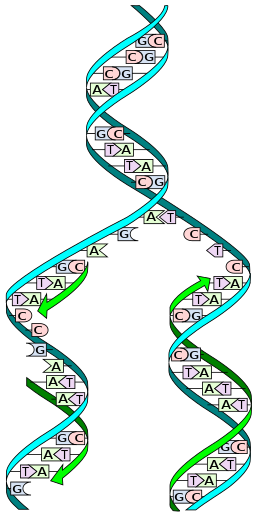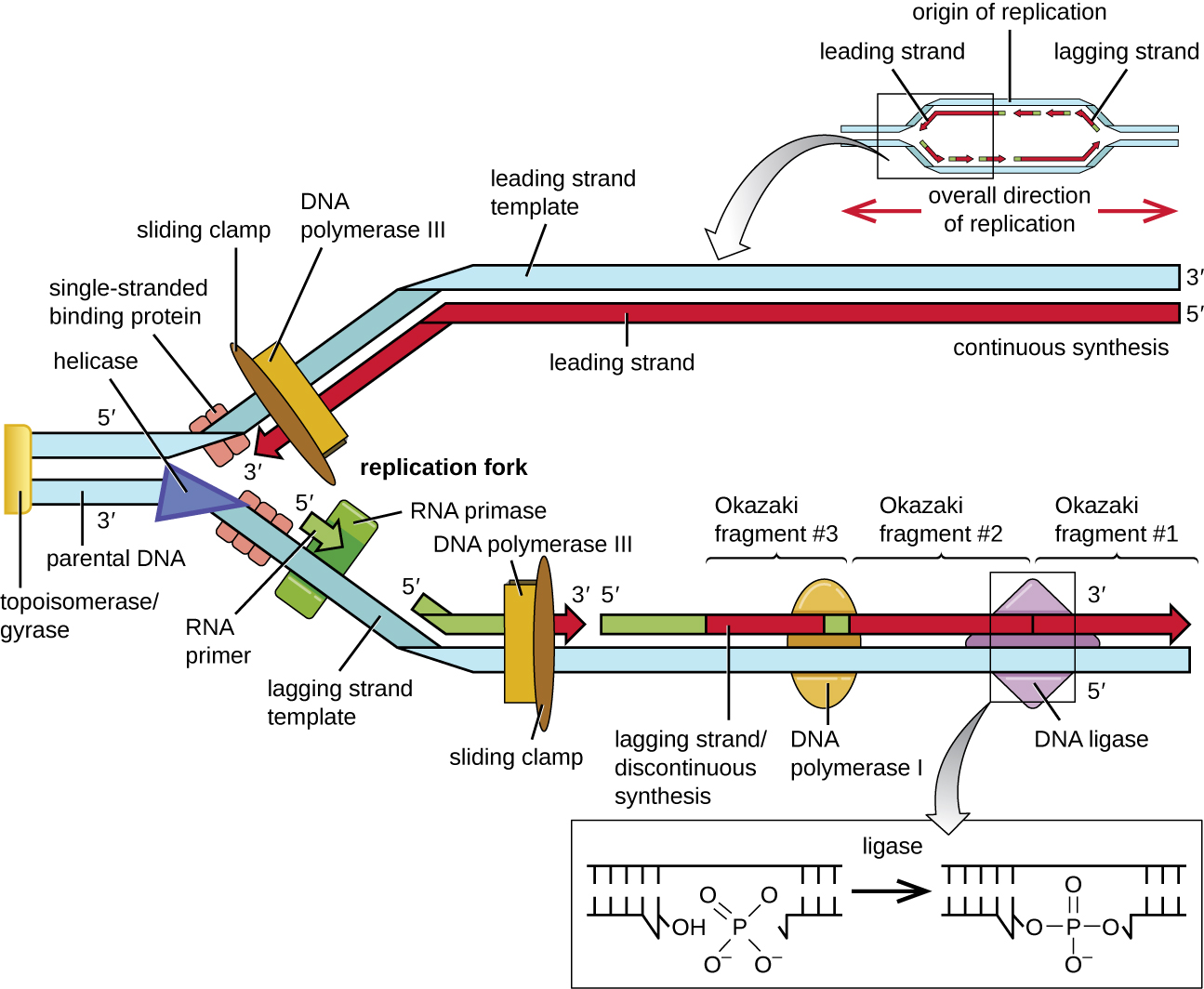Contents
Chargaff’s Rule
Nucleic Acids

Nucleic acids are composed of linked nucleotides. DNA includes the sugar, deoxyribose, combined with phosphate groups and combinations of thymine, cytosine, guanine, and adenine. RNA includes the sugar, ribose with phosphate groups and combinations of uracil, cytosine, guanine, and adenine.
DNA and RNA are nucleic acids and make up the genetic instructions of an organism. Their monomers are called nucleotides, which are made up of individual subunits. Nucleotides consist of a 5-Carbon sugar (a pentose), a charged phosphate and a nitrogenous base (Adenine, Guanine, Thymine, Cytosine or Uracil). Each carbon of the pentose has a position designation from 1 through 5. One major difference between DNA and RNA is that DNA contains deoxyribose, and RNA contains ribose. The discriminating feature between these pentoses is at the 2′ position where a hydroxyl group in ribose is substituted with a hydrogen.
The following video illustrates the structure and properties of DNA
DNA is a double helical molecule. Two anti-parallel strands are bound together by hydrogen bonds. Adenine forms 2 H-bonds with Thymine. Guanine forms 3 H-bonds with Cytosine. This AT & GC matching is referred to as complementarity. While the nitrogenous bases are found on the interior of the double helix (like rungs on a ladder), the repeating backbone of pentose sugar and phosphate form the backbone of the molecule. Notice that phosphate has a negative charge. This makes DNA and RNA, overall negatively charged.
DNA Replication

Francis Crick proposed 3 models for how DNA might replicate. Credit: Jeremy Seto (CC-BY 3.0)
Meselson & Stahl Experiment

Meselson & Stahl revealed semi-conservative replication as the method through use of radiolabeling DNA in bacteria. Credit: Jeremy Seto (CC0)







